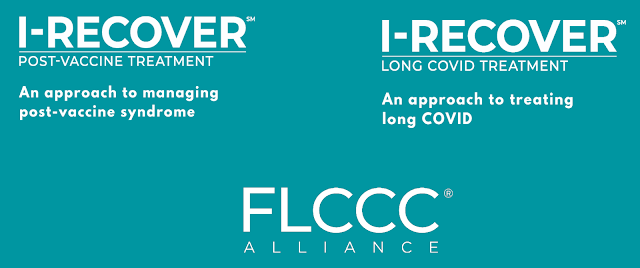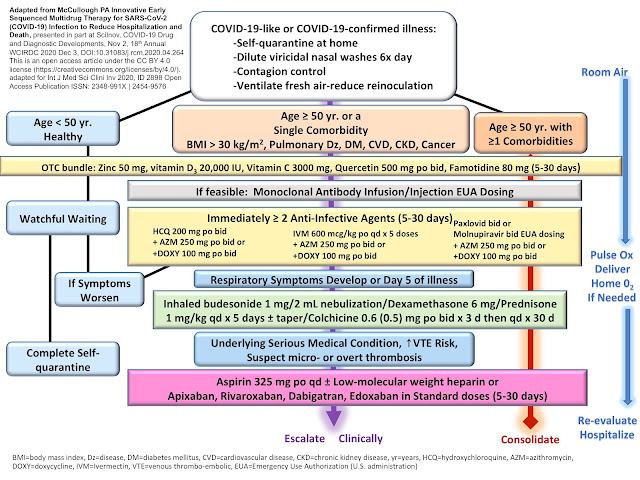New-onset of rheumatic diseases following COVID-19 vaccination: Case reports and a literature review (2025)
Immunological Medicine
Published online: 16 Apr 2024
- PMID: 38627989
Abstract
Vaccines against coronavirus disease 2019 (COVID-19) have been distributed in most countries for the prevention of onset and aggravation of COVID-19. Recently, there have been increasing numbers of reports on new-onset autoimmune and autoinflammatory diseases following COVID-19 vaccination, however, only little information is available on the long-term safety of these vaccines. Here, we experienced three cases of new-onset rheumatic diseases following COVID-19 vaccination, one case each of rheumatoid arthritis (RA), anti-neutrophil cytoplasmic antibody (ANCA)-associated vasculitis (AAV) and systemic lupus erythematosus (SLE). The symptom onset ranged from one day to a few days following vaccination. The patients of AAV and SLE were treated successfully with glucocorticoid therapy, and the patient of RA died due to COVID-19. In the literature review of new-onset rheumatic diseases following COVID-19 vaccination, which including seven cases of RA, 37 cases of AAV and 18 cases of SLE, the mean time from vaccination to onset was approximately 11 to 12 days. Most cases improved with glucocorticoid, immunosuppressive drugs and biologic agents. Although such adverse effects are rare, and vaccines are useful in prevent onset and severity of infections, continued accumulation of similar cases is important in terms of examining the long-term safety and understanding pathogenic mechanism of rheumatic.Case 1
A 79-year-old woman developed swelling and pain in finger joints and both ankle joints 2–3 days after the second dose of the BNT162b2 mRNA COVID-19 vaccine. She was admitted to our hospital with difficulty walking at 27 days after the vaccination. She had a history of hypertension and nontuberculous mycobacterial (NTM) infection. She and her family had no history of rheumatic diseases. She had no adverse events of note after the first vaccination. Physical examination revealed polyarthritis with swelling in 20/28 joints and tenderness in 23/28 joints, with high disease activity (disease activity score in 28 joints with ESR [DAS-28 ESR]: 8.48 and [DAS-28 CRP]: 7.94). Her health assessment questionnaire disability index (HAQ-DI) score was 1.875. Laboratory test results were as follows: white blood cell count 7680/µL (neutrophils 76.5%, lymphocytes 14.3%), Hb 8.2 g/dL, platelets 47.4 × 104/µL, erythrocite sedimentation rate (ESR) 95 mm/h, albumin 2.3 g/dL, creatine kinase 28 U/L, aspartate aminotransferase (AST) 18 U/L, alanine aminotransferase (ALT) 19 U/L, lactate dehydrogenase (LDH) 158 U/L, creatinine 0.81 mg/dL, C-reactive protein (CRP) 10.69 mg/dL, serum ferritin 621 ng/mL, matrix metalloproteinase-3 (MMP-3) 249.4 ng/mL, antinuclear antibody (ANA) negative, rheumatoid factor (RF) 59 IU/mL and anti-cyclic citrullinated peptide (CCP) antibody 184.6 U/mL. The interferon gamma release assay was negative. polymerase chain reaction (PCR) test for SARS-CoV-2 from nasopharyngeal swabs was negative. Anti-mycobacterium avium complex antibody was positive (1.0 U/mL). Ultrasonography of wrists and finger joints revealed synovitis. X-rays of the joints found no evidence of erosions. RA was diagnosed according to the 2010 American College of Rheumatology (ACR)/European League Against Rheumatism classification criteria for RA [4]. The patient was treated with subcutaneous abatacept (125 mg, weekly) without methotrexate because of concomitant NTM. Later, her arthritis was refractory to abatacept, followed by etanercept, so she was switched to baricitinib. Baricitinib was effective but was discontinued after she developed a urinary tract infection, and was switched to sarilumab but then discontinued due to herpes zoster. She had been treated with tacrolimus, but then, developed COVID-19 and died.
Case 2
A 71-year-old woman developed a fever and cough the day after her second dose of the BNT162b2 mRNA COVID-19 vaccine. She received medication from her previous physician but did not improve. Seven days after the vaccination, her laboratory data were abnormal with white blood cell count 12,230/µL, CRP 10.9 mg/dL and no computed tomography (CT) findings in the chest and abdomen. Her cough improved with antibiotic treatment, but she then developed pain in her shoulders, lower back and lower legs. She was admitted to our hospital 18 days after her second COVID-19 vaccination. She and her family had no history of rheumatic diseases. She had no adverse events of note after the first vaccination. She developed swelling and pain in the finger joints and grasping pain in the bilateral lower legs. Laboratory test results were as follows: white blood cell count 12,290/µL (neutrophils 75.1%, lymphocytes 14.6%), Hb 10.5 g/dL, platelets 50.2 × 104/µL, ESR 120 mm/h, albumin 2.5 g/dL, creatine kinase 11 U/L, AST 15 U/L, ALT 16 U/L, LDH 128 U/L, creatinine 0.78 mg/dL, CRP 14.53 mg/dL, serum ferritin 248 ng/mL, ANA negative, RF 64 IU/mL and Myeloperoxidase Anti-neutrophil Cytoplasmic Antibody (MPO-ANCA) 12.0 U/mL. PCR test for SARS-CoV-2 from nasopharyngeal swabs was negative. Other infectious diseases were excluded by blood, sputum and urine culture tests. Magnetic resonance imaging demonstrated high signal intensity in the bilateral lower leg muscles on short-tau inversion recovery (STIR) images (). A biopsy of the left gastrocnemius muscle revealed fragmented elastic fibers with Elastica van Gieson staining, signifying the presence of blood vessels, and AAV was diagnosed (). Oral glucocorticoid therapy (prednisolone 35 mg/day; 0.7 mg/kg/day) was administered initially. Her symptoms improved. The inflammatory findings disappeared, MPO-ANCA decreased to negative and the patient was discharged. During her treatment, she developed pyelonephritis, idiopathic osteonecrosis of the femoral head and urinary tract infection. The dose of prednisolone was gradually reduced to 3 mg, and no relapse was observed.
Case 3
A 32-year-old woman developed chest pain, left axillary lymphadenopathy and erythema on her cheeks 2–3 days after her third dose of the COVID-19 vaccine (first and second vaccines, BNT162b2; third vaccine, mRNA-1273). The erythema spread and lip swelling appeared. She developed a low-grade fever around 37 °C. Despite treatment by a dermatologist, the erythema on her cheeks spread and appeared also on her upper extremities and body. After treatment with methylprednisolone (drug dosage unknown) by her previous physician, the fever and lip swelling improved. The patient was admitted to our hospital with suspected collagen disease approximately four months after the vaccination. She had no history of rheumatic diseases and her grandmother had Takayasu arteritis. She had no adverse events of note after the first and second vaccinations. On physical examination, there was discoid lupus around her nasal wings, erythema chilblains with desquamation of her auricle, erythema chilblains on her fingers and left axillary lymphadenopathy. Laboratory test results were as follows: white blood cell count 2500/µL (neutrophils 56.4%, lymphocytes 30.8%), Hb 12.8 g/dL, platelets 16.2 × 104/µL, ESR 64 mm/h, albumin 3.8 g/dL, creatine kinase 24 U/L, AST 40 U/L, ALT 39 U/L, LDH 346 U/L, creatinine 0.46 mg/dL, CRP 0.19 mg/dL, 50% hemolytic complement (CH 50) activity 19.9 U/mL (normal range: 31.6–57.6), the third component of complement (C3) 36 mg/dL (normal range: 73–138), the fourth component of complement (C4) 7 mg/dL (normal range: 11–31), serum ferritin 87 ng/mL, IgG 1735 mg/dL, IgA 299 mg/dL, IgM 92 mg/dL and activated partial thromboplastin time 33.4 s. ANA was positive (1:160, speckled patterns). Anti-ribonucleoprotein antibody (119.0 U/mL), anti-Sm antibody (481.0 U/mL) and anti-SS-A antibody (1200.0 U/mL) were positive. Anti-dsDNA antibody, lupus anticoagulant test and anticardiolipin IgG were negative. PCR test for SARS-CoV-2 from nasopharyngeal swabs was negative. Real-time PCR test for Epstein-Barr virus was negative. Other infectious diseases were excluded by blood, sputum and urine culture tests. CT of the neck, chest, abdomen and pelvis revealed multiple lymphadenopathy at the bilateral axillas and splenomegaly. SLE was diagnosed according to the 2019 European League Against Rheumatism/ACR criteria for SLE [5], based on discoid lupus, leukopenia, low complement, ANA-positivity and anti-Sm antibody–positivity. Oral glucocorticoid therapy (prednisolone 30 mg/day; 0.6 mg/kg/day) was administered initially. Hydroxychloroquine was then used concomitantly. Her symptoms improved and the inflammatory findings disappeared, and the patient was discharged. The dose of prednisolone was then gradually reduced to 5 mg, and no relapse was observed.
Source: https://www.tandfonline.com/doi/full/10.1080/25785826.2024.2339542
Related:
Fatal hemophagocytic lymphohistiocytosis with intravascular large B-cell lymphoma following coronavirus disease 2019 vaccination in a patient with systemic lupus erythematosus: an intertwined case (Immunological Medicine 2024)




.png)


Comments
Post a Comment